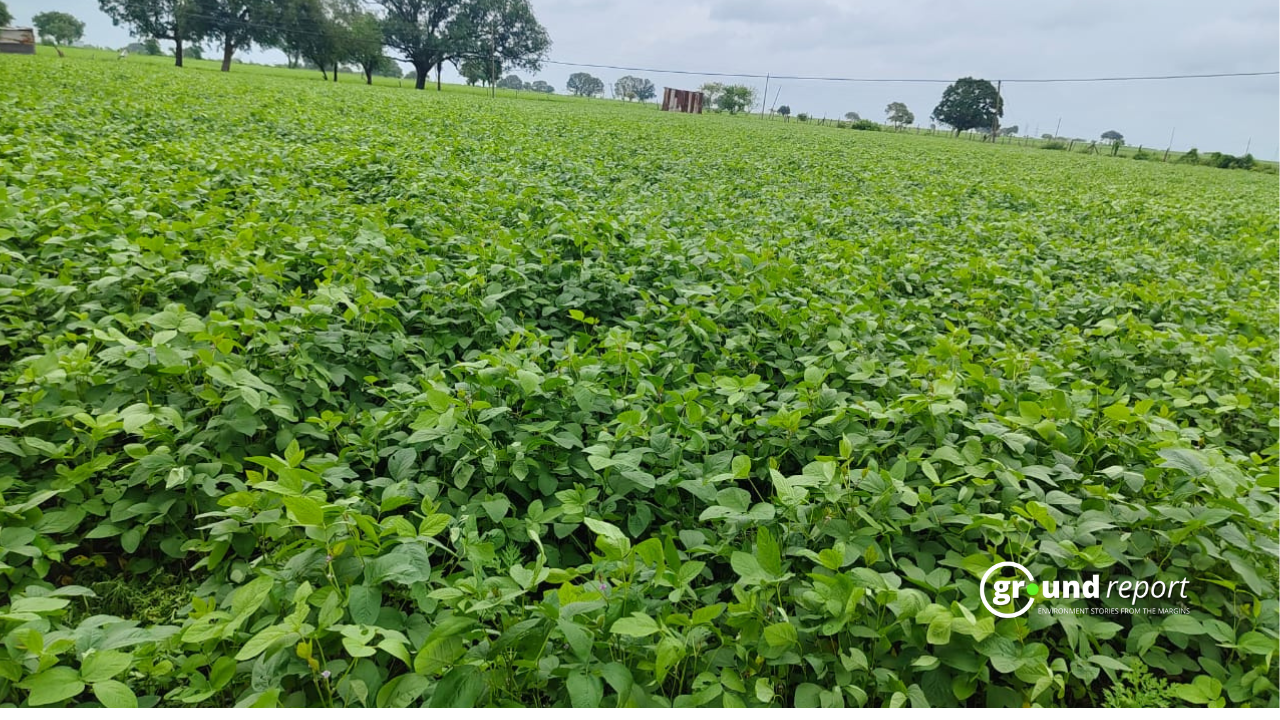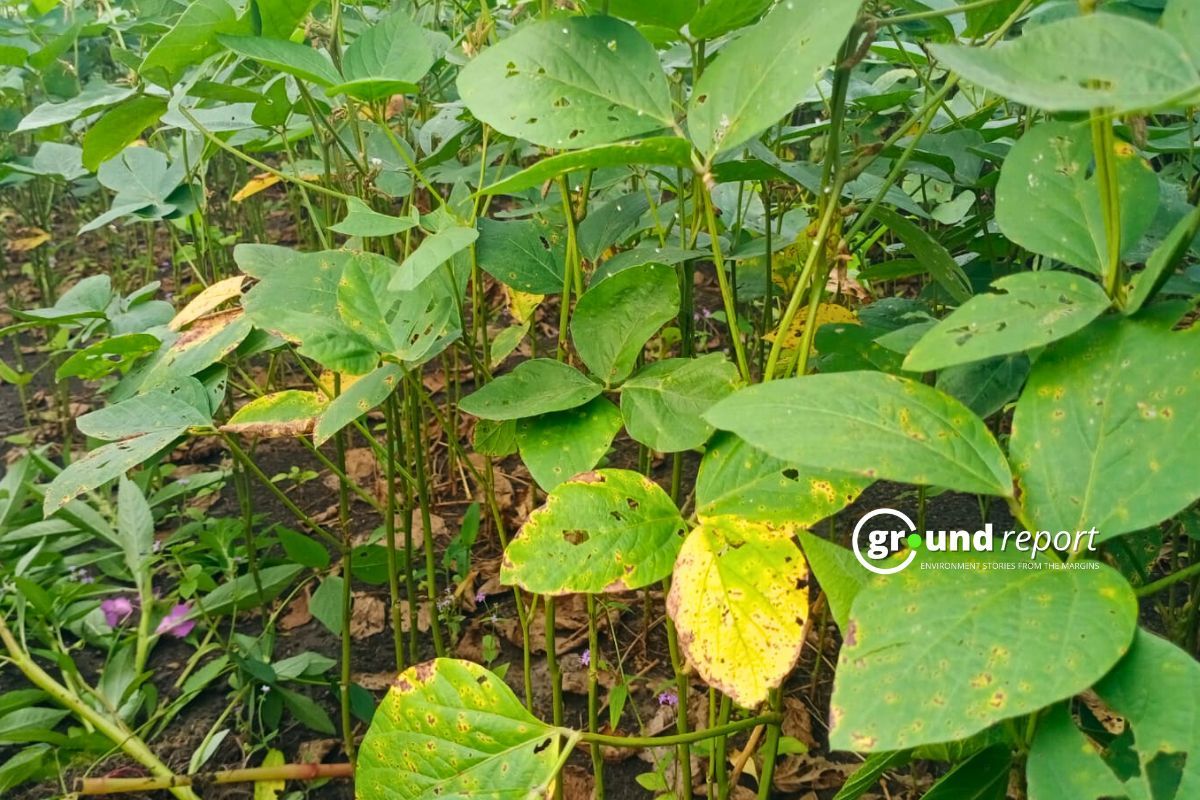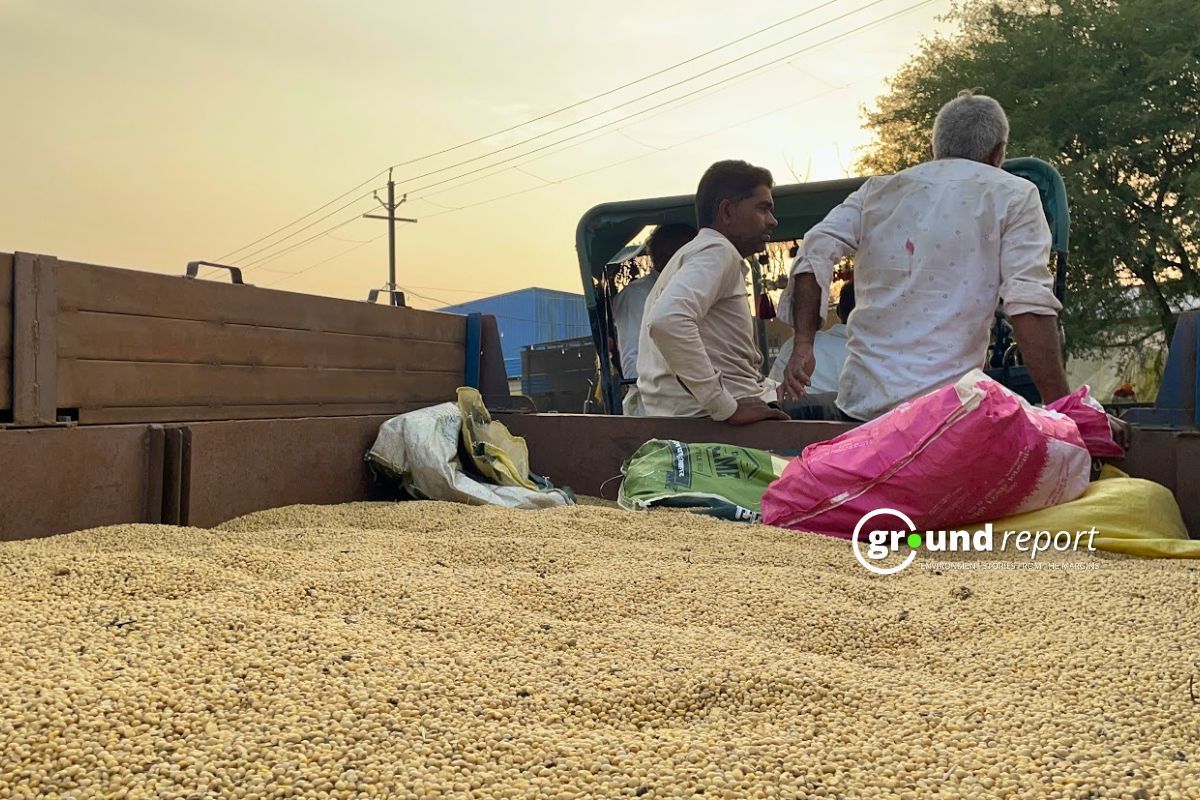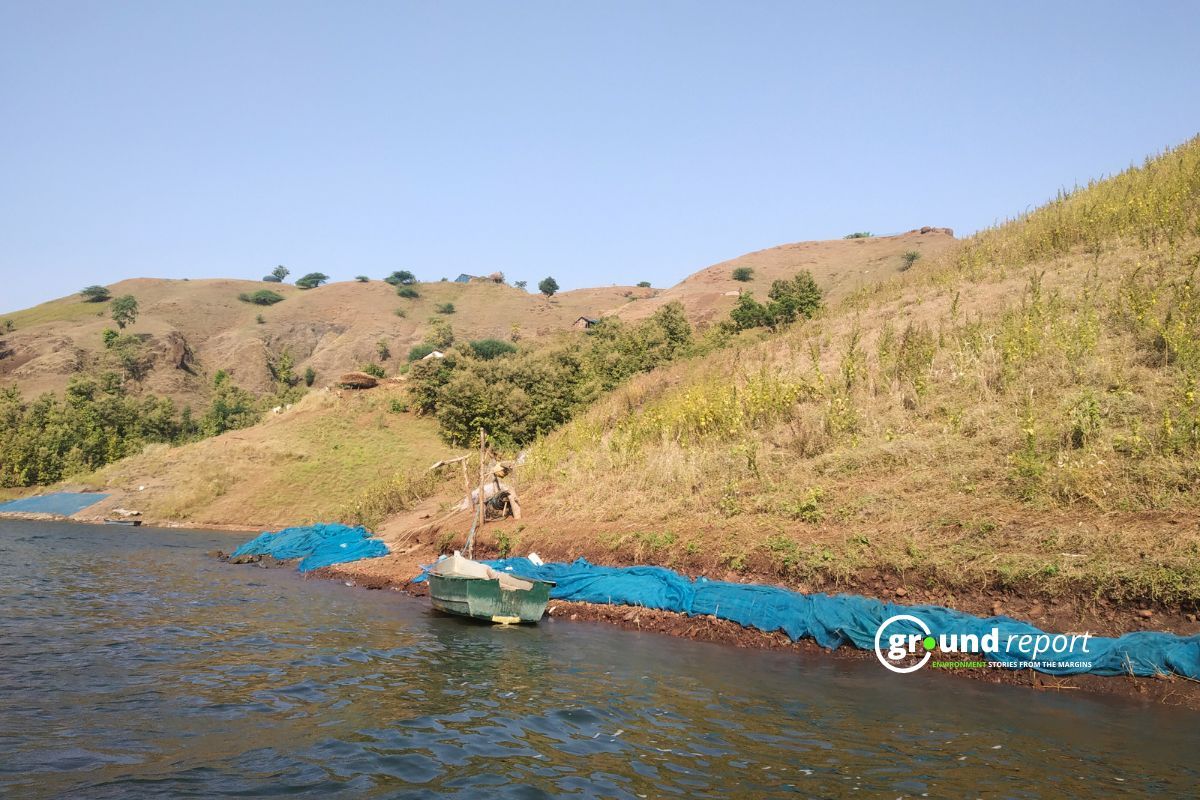Gokul Barot, a 45-year-old farmer from Dewas district in Madhya Pradesh, sown soybeans on his 1-acre land four weeks ago. He has been growing this crop for the last 15 years. Over the years, he has shifted his sowing timeline. He mentions that ten years ago, they used to sow the crop in June itself. However, due to hot summers and delayed rains, they sow it almost 20-25 days later.
According to him, apart from delayed monsoons, an increase in pest attacks and other insecticides is another reason for the shift.
“Years ago, I didn’t even know what fungicides are, and now, due to several diseases, the crops need more chemicals to keep them pest-free. This also increases the cost of the crop,” he told Ground Report.
Farmers in central India have been growing soybeans for commercial purposes for the past 50 years. Over this period, the crop has expanded in its production and size. It has grown from just 30,000 hectares in 1970–71 to more than 11.6 million ha in 2018–19. However, alarmingly, India’s average soybean output has been stagnant at around 1,000 kg per ha over the past few years. For context, the output improved from 426 kg per ha in early 1970 to 1,219 kg per ha in 2016–17.
Soybeans are mostly farmed in rainfed conditions. The crop’s susceptibility to excessive and inadequate soil moisture arises from the large fluctuations in the duration, timing, and amount of precipitation.
The Indore airport’s weather centre reports the amount of rain was 10.2 inches by July. However, Indore had already gotten 20.5 inches of rain by then, which was more than twice as much as this year.
Extended dry spells, early monsoon withdrawal, or delayed monsoon have all been major contributors to the soybean crop’s poor performance. The peak month for rainfall has shifted from July to August over the past ten years, while the total amount of rainfall during that month has decreased.

Shift in Monsoon
A study was conducted in three Madhya Pradesh districts: Indore, Dewas, and Dhar— situated in the Nimar Plateau and Malwa. Most farmers reported that the monsoon pattern has changed both in terms of when it arrived and its movement during the crop season. They claim that during the past ten years, the monsoon has primarily been inconsistent or sparse in their area. Additionally, during the kharif season, they frequently suffer protracted dry spells, impacting crop development and productivity.
Rise and fall of soybean
In the mid-2000s, the soybean industry saw a boom. India’s soya meal exports increased dramatically from slightly over Rs 1,360 crore to about Rs 14,500 crore between 2002–2003 and 2013–2014. The soybean growers in Malwa and the surrounding districts of MP saw their fortunes rise along with the sector and the oil industry’s realizations. Soybean prices in the Indore market increased from Rs 1,353 to Rs 3,667 per quintal on average during this time.
Following the 2013–14 drop in global agri-commodity prices, that boom came to an end. Since then, soy meal exports have dropped to Rs 1,900 crore in 2015–16, before marginally recovering in the years that followed. Realizations for soybeans have also decreased to between Rs 2,900 and Rs 3,000 per quintal.

Additionally, soybeans, over the years, have become prone to pest and disease attacks. Pests that are increasingly harming crops include tobacco caterpillars, girdle beetles, white flies (carriers of the yellow mosaic virus), and stem flies (whose larvae feed on the inside of the stem, hollowing it out). According to the Madhya Pradesh Agricultural Department, there was a 40% increase in pest attacks, including the soybean pod borer and leaf spot diseases, in 2023 compared to the previous year. More than 275 insect pests have been found to infest various plant portions of soybeans during the crop’s growth stage. Of these, approximately twelve have been shown to seriously harm soybeans from the time of sowing until harvest.
A survey by the Indian Council of Agricultural Research (ICAR) reported that 60% of soil samples from soybean-growing regions in Madhya Pradesh are deficient in key nutrients such as nitrogen, phosphorus, and potassium.
R.P. Singh, an agricultural expert based in Bhopal, said, “This is due to the absence of crop rotation and lack of change in the variety of the crop.”
Recommendations for rainfed soybean
Madhya Pradesh is at the forefront of soybean farming. During the Kharif season, farmers in the Indore division are anticipated to sow nine lakh hectares of soybeans. To survive extended dry spells in soybean-growing regions, the Indian Institute of Soybean Research, or ICAR, Indore, advised farmers to utilize raised beds and broad beds.
These methods allow the conservation of water and use it effectively. The Broad Bed Furrow (BBF) system is made up of sunken furrows that are 50 cm wide and spaced apart by broad beds that are roughly 100 cm wide. On vertisols, a slope of 0.4 to 0.8 per cent is the ideal amount to slope along the furrow. The broad bed may support a crop arranged in two, three, or four rows. The bed width and crop geometry can be adjusted to accommodate different planting and management tools. The BBF technology offers numerous benefits, such as greater drainage of surplus water, in-situ rainfall conservation in furrows, and appropriate aeration in the root zone and seedbed.
Raised bed farming with furrow irrigation is an extremely effective method that uses controlled dispensing and constructed soil surfaces to ensure that farmers don’t use more than the required water.
“Now we cultivate on elevated lands (raised beds) that are water-effective and help the crop during the dry spell,” said Barot, the farmer.

Lack of support for farmers
Only 20% of soybean farmers reported receiving timely agricultural extension services and support from government programs in 2023, as per a survey by the Indian Agricultural Statistics Research Institute (IASRI).
“Soybean crops in Madhya Pradesh are suffering due to a combination of unpredictable weather patterns, soil degradation, pest and disease outbreaks, inadequate irrigation facilities, limited access to quality seeds and technology, market price fluctuations, and insufficient government support,” Singh told Ground Report.
Keep Reading
Indian agriculture household earns just Rs. 10,218 in a month: Govt
Post-harvest losses still high, reveals data shared in Lok Sabha
Support us to keep independent environmental journalism alive in India.
Follow Ground Report on X, Instagram and Facebook for environmental and underreported stories from the margins. Give us feedback on our email id greport2018@gmail.com.
Don’t forget to Subscribe to our weekly newsletter, Join our community on WhatsApp, Follow our Youtube Channel for video stories.






